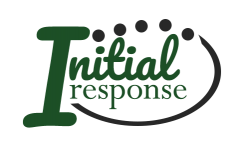By focusing tightly on learning strategies, students learning abilities can be refined. There are schools that have almost doubled their performance with the right instructional strategies within two to three years. The model of learning that is now in use by educators is interactive learning (IL). According to educators, schools must implement these strategies every day.
School’s academic facilitates also run training sessions to educate teachers about the best strategies and they can be incorporated. Academic facilitators suggest teachers ask high-order-thinking questions during their class. Providing challenging work to students will refine their learning abilities. It provides students with an opportunity to be challenged and shape their thinking styles. When students develop a habit of solving challenging questions, their thinking ability and learning ability increase.
Moreover, creating a better learning space for students also influence students’ learning abilities in a positive way. Teachers should motivate students to consult libraries to complete their assignments and projects. And educational institutes can use software to automate their libraries. It will reduce staff burden and improve the process. For example, some of the libraries in Pakistan are using library automation software in Pakistan to manage library functions automatically.
Here we have five best strategies that every school must follow to refine students’ learning abilities.
One Essential Question Per Lesson
Every lesson has a goal to teach something. That’s why students should be able to answer that essential question at the end of the lesson. The teacher should have planned that essential question beforehand. This question will help the teacher to know whether the students learned what the teacher wants them to learn.
We can say, it is the highest level of learning when students can give accurate responses to what they are able to do after the lesson. The answer should not be a yes or no, students need to be able to analyze and apply.
Use Activation Strategy
An activation strategy is basically something that indulges students in active thinking. Your goal is to make students able to build a connection between the lesson and the practical world. For example, after teaching about wheels, students can be asked about their usage and benefits in real life.
Moreover, linking the lesson with students’ interests also helps in refining students’ learning abilities. For example, while teaching about the different environmental conditions in which different animals survive, students can be asked about their pets. Moreover, asking students to make models of the habitat of their favorite animals.
Use Relevant Vocabulary
To refine students learning abilities, you also need to present relevant vocabulary in your lesson. Keeping the vocabulary limited and using it throughout the lesson actively also refine learning. You can make sure that your students also use that vocabulary during the lesson.
As a teacher, you can choose the most important and relevant vocabulary. You can teach them vocabulary by using your experience, a graphic organizer, or anything that helps students.
Limited Lecture Time
You should have a limited lecture time. After 13-15 minutes of lecturing, you can use some interesting activities to increase students’ attention. This engaging activity can only be for a few minutes. After the activity, you can restart your lecture for another 15-20 minutes.
The activities that you choose can be just recreational or educational. For example, you can ask students to talk to their neighbor about the lecture and summarize it for each other.
Use A Graphic Organizer
A graphic organizer is really helpful for students to review old information and to visually categorize new information. Students are expected to conceptualize the information they get during lessons. A graphic organizer is student-friendly software. When students look at the organized information, it would be easier for them to conceptualize.
With a graphic organizer, students can easily review their lessons when they go home. Retention of new information is also higher when students are presented with information with a graphic organizer.













Comments